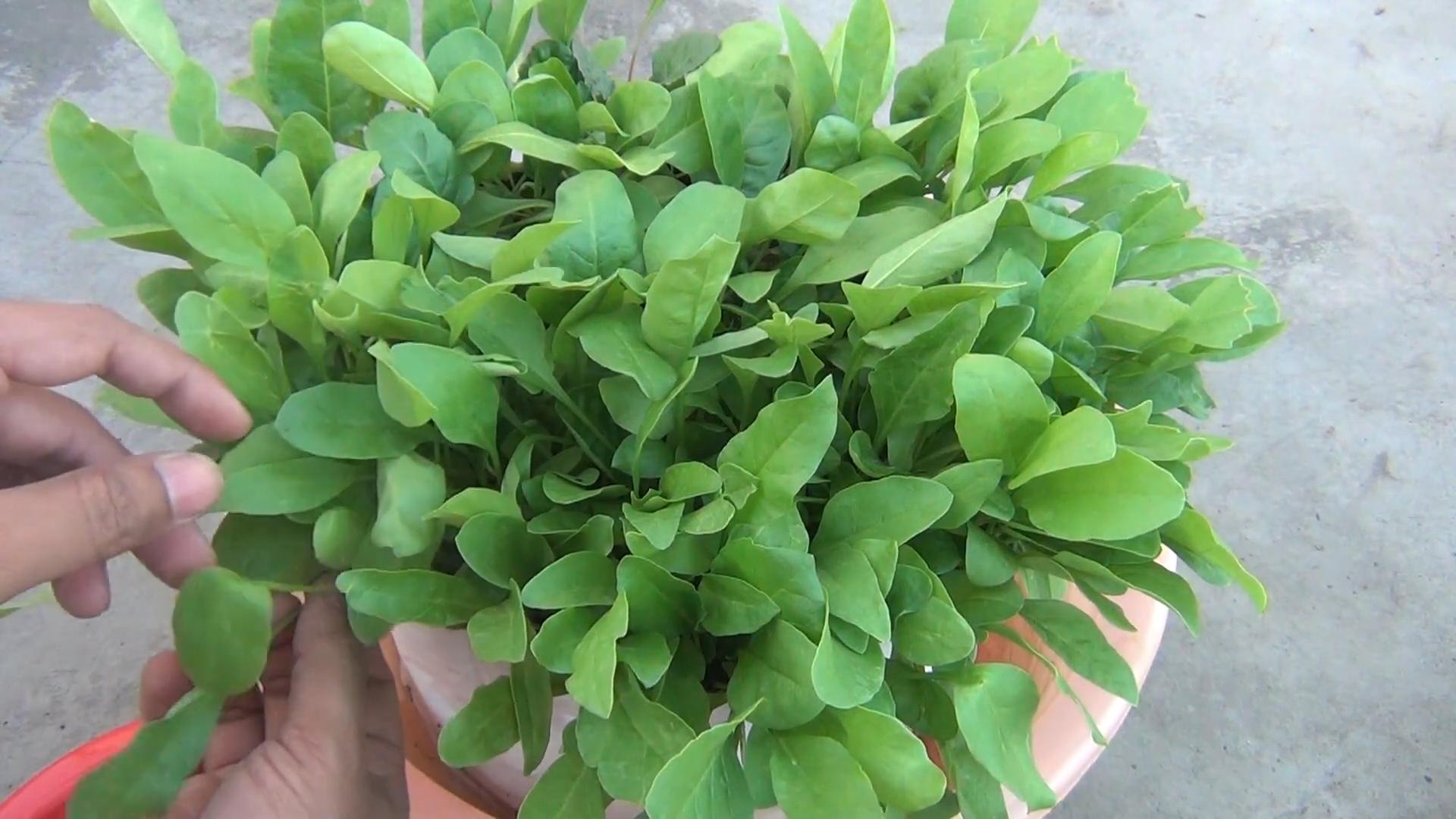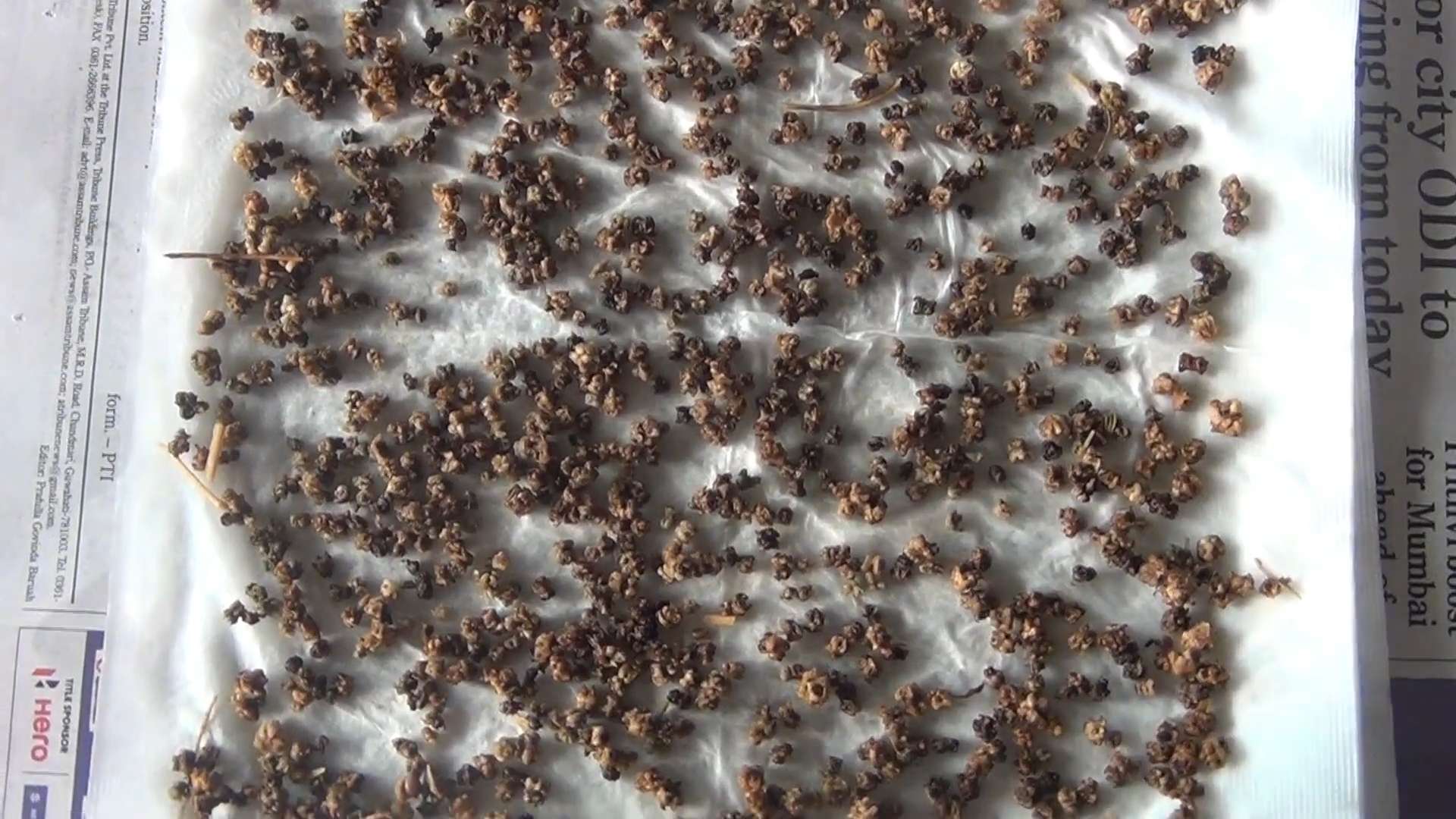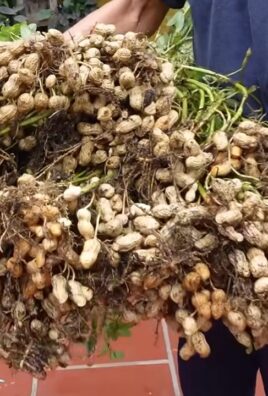Grow Spinach Year Round? Absolutely! Imagine fresh, vibrant spinach gracing your plate even when the snow is falling outside. No more bland, store-bought greens – just crisp, delicious spinach harvested straight from your own backyard, no matter the season. For centuries, cultures around the globe have cherished spinach, not only for its nutritional powerhouse status but also for its versatility in the kitchen. From Popeye’s legendary strength to countless culinary creations, spinach has earned its place in our hearts and diets.
But let’s face it, growing spinach can sometimes feel like a seasonal affair. That’s where these DIY tricks and hacks come in! I’m going to share some simple, yet effective methods to extend your spinach harvest and enjoy this leafy green all year long. Whether you’re a seasoned gardener or just starting out, these tips will empower you to cultivate a thriving spinach patch, regardless of the weather.
Why do you need these tricks? Because fresh, homegrown spinach tastes infinitely better, is packed with more nutrients, and saves you money at the grocery store. Plus, there’s nothing quite like the satisfaction of nurturing your own food from seed to table. So, let’s dive in and discover how you can grow spinach year round and enjoy a continuous supply of this amazing vegetable!

Growing Spinach Year-Round: My Foolproof DIY System
Hey there, fellow garden enthusiasts! I’m super excited to share my secret weapon for enjoying fresh, delicious spinach all year long. Forget those sad, wilted bags from the grocery store – with a little planning and some simple DIY techniques, you can have a constant supply of this leafy green goodness right in your backyard (or even on your balcony!). This guide will walk you through everything you need to know, from choosing the right varieties to building a simple cold frame. Let’s get started!
Choosing the Right Spinach Varieties
First things first, not all spinach is created equal. Some varieties thrive in the cool weather of spring and fall, while others are more heat-tolerant. To grow spinach year-round, you’ll need to select a mix of varieties suited to different seasons.
* For Spring and Fall: Look for varieties like ‘Bloomsdale Long Standing’, ‘Winter Bloomsdale’, ‘Giant Nobel’, and ‘Space’. These are cold-hardy and bolt-resistant, meaning they won’t quickly go to seed when the weather warms up slightly.
* For Summer: While spinach generally doesn’t love hot weather, some varieties are more tolerant. ‘Malabar’ spinach (though technically not true spinach) is a great option for summer harvests. It’s heat-resistant and produces large, fleshy leaves. Another option is ‘New Zealand’ spinach, which also thrives in warmer temperatures.
* For Winter: ‘Tyee’ and ‘Regiment’ are excellent choices for winter growing, especially if you’re using a cold frame or other protective structure. They can withstand freezing temperatures and still produce a decent harvest.
Understanding the Basics of Spinach Growing
Before we dive into the DIY projects, let’s cover some essential spinach-growing tips:
* Sunlight: Spinach needs at least 3-6 hours of sunlight per day. In the summer, some afternoon shade can help prevent bolting.
* Soil: Spinach prefers well-drained soil that’s rich in organic matter. Amend your soil with compost or aged manure before planting. A soil pH of 6.5 to 7.0 is ideal.
* Watering: Keep the soil consistently moist, but not waterlogged. Water deeply whenever the top inch of soil feels dry.
* Fertilizing: Spinach is a heavy feeder. Apply a balanced fertilizer every few weeks, or side-dress with compost.
* Spacing: Space spinach plants about 4-6 inches apart in rows that are 12 inches apart.
* Succession Planting: This is key to year-round harvests! Sow seeds every 2-3 weeks to ensure a continuous supply of spinach.
Building a Simple Cold Frame for Winter Spinach
Okay, now for the fun part! A cold frame is essentially a mini-greenhouse that protects your plants from frost and cold winds. It traps solar heat, creating a warmer environment for your spinach to thrive in during the winter months. Here’s how to build a simple one:
Materials You’ll Need:
* Lumber: I usually use scrap wood I have lying around, but you can buy 2x4s or 1x4s from your local hardware store. You’ll need enough to build a rectangular frame.
* Clear Plastic Sheeting or Old Windows: This will be the “roof” of your cold frame. Old windows are great because they’re sturdy and let in plenty of light. Heavy-duty plastic sheeting is a more affordable option.
* Hinges: To attach the lid to the frame.
* Screws or Nails: For assembling the frame.
* Staple Gun (optional): If you’re using plastic sheeting, you’ll need a staple gun to attach it to the frame.
* Measuring Tape, Saw, Drill, and Safety Glasses: The usual DIY tools.
Step-by-Step Instructions:
1. Measure and Cut the Lumber: Decide on the size of your cold frame. I usually make mine about 4 feet long, 2 feet wide, and 1 foot tall in the back, sloping down to 6 inches tall in the front. This slope helps to maximize sunlight exposure. Cut the lumber according to your measurements. You’ll need two pieces for the long sides, two for the short sides, and potentially additional pieces for internal support depending on the size and sturdiness you desire.
2. Assemble the Frame: Use screws or nails to assemble the rectangular frame. Make sure the corners are square. If you’re using thicker lumber, you might want to pre-drill holes to prevent the wood from splitting. I like to use wood glue in addition to screws for extra strength.
3. Attach the Lid (Plastic Sheeting Option): If you’re using plastic sheeting, stretch it tightly over the top of the frame and staple it in place with a staple gun. Make sure there are no wrinkles or gaps. You can also use furring strips to secure the plastic more firmly.
4. Attach the Lid (Window Option): If you’re using an old window, attach it to the back of the frame with hinges. This will allow you to open and close the cold frame for ventilation. Make sure the hinges are strong enough to support the weight of the window.
5. Add Ventilation: Ventilation is crucial to prevent overheating inside the cold frame. You can prop the lid open with a stick or brick on warm days. You can also drill a few small holes in the sides of the frame for ventilation.
6. Position Your Cold Frame: Choose a sunny spot in your garden that’s protected from strong winds. The south-facing side of your house is usually a good option.
7. Prepare the Soil Inside the Cold Frame: Amend the soil inside the cold frame with compost or aged manure. Make sure the soil is well-drained.
8. Plant Your Spinach: Sow spinach seeds directly into the soil inside the cold frame, following the spacing guidelines mentioned earlier.
9. Water and Monitor: Water the spinach regularly and monitor the temperature inside the cold frame. On sunny days, you may need to open the lid to prevent overheating. On very cold nights, you can cover the cold frame with a blanket or tarp for extra insulation.
Extending the Season with Row Covers
Another simple and effective way to extend your spinach growing season is by using row covers. These are lightweight fabric covers that you place over your plants to protect them from frost, pests, and harsh weather.
Materials You’ll Need:
* Row Cover Fabric: You can buy this at most garden centers or online. Choose a lightweight fabric that allows sunlight and water to penetrate.
* Wire Hoops or PVC Pipes: To support the row cover.
* Clamps or Rocks: To secure the row cover to the ground.
Step-by-Step Instructions:
1. Install the Hoops: Insert the wire hoops or PVC pipes into the ground along the rows of spinach. Space them about 2-3 feet apart.
2. Drape the Row Cover: Drape the row cover fabric over the hoops, making sure it covers the entire row of spinach.
3. Secure the Edges: Secure the edges of the row cover to the ground with clamps or rocks. This will prevent the wind from blowing it away.
4. Ventilation: On warm days, you may need to lift the edges of the row cover to provide ventilation.
Succession Planting for Continuous Harvests
As I mentioned earlier, succession planting is the key to enjoying spinach year-round. Here’s how I do it:
* Spring Planting: Start sowing spinach seeds indoors or directly in the garden as soon as the soil can be worked in the spring.
* Summer Planting: Sow heat-tolerant varieties like ‘Malabar’ or ‘New Zealand’ spinach in late spring or early summer. Provide some afternoon shade to prevent bolting.
* Fall Planting: Sow cold-hardy varieties in late summer or early fall for a fall and winter harvest.
* Winter Planting: Sow spinach seeds in your cold frame or under row covers in late fall for a winter and early spring harvest.
I keep a gardening journal to track my planting dates and harvest times. This helps me to plan my succession plantings more effectively.
Dealing with Pests and Diseases
Spinach is generally a pretty easy crop to grow, but it can be susceptible to a few pests and diseases. Here are some common problems and how to deal with them:
* Aphids: These tiny insects can suck the sap from spinach leaves. Spray them with a strong stream of water or use insecticidal soap.
* Leaf Miners: These pests tunnel inside the leaves, leaving unsightly trails. Remove and destroy infested leaves.
* Downy Mildew: This fungal disease can cause yellow spots on the leaves. Improve air circulation and avoid overhead watering.
* Bolting: This is when spinach plants go to seed prematurely, making

Conclusion
So, there you have it! Growing spinach year-round isn’t just a pipe dream; it’s an achievable reality with a little planning and this simple DIY trick. We’ve walked you through the steps, highlighting how easy it is to extend your spinach harvest far beyond the typical growing season. Forget relying solely on grocery store spinach, often wilted and lacking in flavor. Imagine fresh, vibrant, nutrient-packed spinach gracing your table throughout the entire year, all thanks to your own green thumb and a bit of ingenuity.
This method isn’t just about convenience; it’s about control. You control the growing environment, ensuring your spinach receives the optimal conditions for robust growth. You control the inputs, opting for organic practices and avoiding harmful pesticides. And you control the freshness, harvesting only what you need, when you need it.
But the best part? This DIY approach to growing spinach year-round is incredibly adaptable. Feel free to experiment with different varieties of spinach to find your favorites. Try ‘Winter Bloomsdale’ for its cold hardiness, or ‘Tyee’ for its resistance to bolting in warmer weather. Consider using different types of protective structures, from simple row covers to more elaborate cold frames or even a small greenhouse, depending on your climate and available space.
Don’t be afraid to get creative with your soil amendments. Adding compost or well-rotted manure will provide your spinach with the nutrients it needs to thrive. You can also experiment with companion planting, pairing your spinach with other cool-season crops like radishes or lettuce.
This DIY spinach growing technique is a game-changer for any home gardener. It’s a sustainable way to enjoy fresh, healthy greens all year long, and it’s a rewarding experience to nurture your own food from seed to table.
We urge you to give this method a try. Start small, perhaps with a single raised bed or container, and see the magic unfold. Once you taste the difference between store-bought spinach and your own homegrown bounty, you’ll be hooked!
And most importantly, we want to hear about your experiences! Share your successes, your challenges, and your variations in the comments below. Let’s build a community of year-round spinach growers, sharing tips and tricks to help each other succeed. Your insights could be invaluable to someone just starting out. So, grab your seeds, prepare your soil, and get ready to enjoy fresh spinach all year long! Let us know how your **grow spinach year round** project goes!
Frequently Asked Questions (FAQ)
What are the best spinach varieties to grow year-round?
The best spinach varieties for year-round growing depend on your specific climate and growing conditions. However, some generally reliable choices include:
* **’Winter Bloomsdale’:** Known for its excellent cold hardiness, making it ideal for winter growing in colder climates.
* **’Tyee’:** A bolt-resistant variety that performs well in warmer weather, extending your harvest into the spring and fall.
* **’Space’:** A smooth-leafed variety that is easy to clean and offers good disease resistance.
* **’Giant Nobel’:** A fast-growing variety with large, succulent leaves, perfect for quick harvests.
* **’Malabar Spinach:** While not a true spinach, Malabar spinach thrives in hot weather and can be a great substitute during the summer months when true spinach tends to bolt.
Experiment with different varieties to find the ones that thrive best in your garden.
How do I protect my spinach from frost and freezing temperatures?
Protecting your spinach from frost and freezing temperatures is crucial for year-round growing. Here are several effective methods:
* **Row Covers:** These lightweight fabric covers are draped over your plants, providing a layer of insulation and trapping heat.
* **Cold Frames:** These mini-greenhouses provide a more substantial barrier against the cold, offering excellent protection for your spinach.
* **Cloches:** Individual glass or plastic covers placed over each plant, offering localized protection from frost.
* **Mulch:** Applying a thick layer of mulch around your spinach plants helps to insulate the soil and protect the roots from freezing.
* **Greenhouses:** If you live in a very cold climate, a greenhouse is the most reliable way to grow spinach year-round.
Monitor the weather forecast and take appropriate measures to protect your spinach whenever frost or freezing temperatures are predicted.
How often should I water my spinach?
Spinach needs consistent moisture to thrive, but overwatering can lead to root rot. Water your spinach deeply whenever the top inch of soil feels dry to the touch. The frequency of watering will depend on the weather, soil type, and drainage. In general, water deeply once or twice a week during cooler weather and more frequently during hot, dry periods. Use a soaker hose or drip irrigation to deliver water directly to the roots, minimizing water loss and reducing the risk of foliar diseases.
What are the common pests and diseases that affect spinach, and how can I control them?
Spinach can be susceptible to several pests and diseases, including:
* **Aphids:** These small, sap-sucking insects can weaken your plants. Control them with insecticidal soap or by introducing beneficial insects like ladybugs.
* **Leaf Miners:** These larvae tunnel through the leaves, creating unsightly trails. Remove infested leaves and use row covers to prevent adult flies from laying eggs.
* **Downy Mildew:** This fungal disease causes yellow spots on the leaves. Improve air circulation, avoid overhead watering, and use resistant varieties.
* **Spinach Blight:** This viral disease causes stunted growth and yellowing of the leaves. Use resistant varieties and control aphids, which can transmit the virus.
Practice good garden hygiene, such as removing plant debris and rotating crops, to prevent pest and disease problems.
How do I know when my spinach is ready to harvest?
Spinach is ready to harvest when the leaves are large enough to eat, typically about 4-6 inches long. You can harvest individual leaves as needed, or cut the entire plant at the base. Regular harvesting encourages continued growth. Avoid harvesting during the hottest part of the day, as the leaves will be more prone to wilting.
Can I grow spinach in containers?
Yes, spinach grows very well in containers. Choose a container that is at least 6-8 inches deep and has good drainage. Use a high-quality potting mix and provide consistent moisture and nutrients. Container-grown spinach may need more frequent watering than spinach grown in the ground.
How do I prevent spinach from bolting (going to seed)?
Bolting is triggered by hot weather and long days. To prevent bolting:
* Choose bolt-resistant varieties.
* Provide shade during the hottest part of the day.
* Water regularly to keep the soil cool and moist.
* Harvest frequently to encourage continued leaf production.
What kind of fertilizer should I use for spinach?
Spinach benefits from a fertilizer that is high in nitrogen. You can use a balanced organic fertilizer or amend the soil with compost or well-rotted manure. Avoid over-fertilizing, as this can lead to excessive leaf growth and reduced flavor.
How much sunlight does spinach need?
Spinach needs at least 4-6 hours of sunlight per day. However, it can tolerate partial shade, especially during the hottest part of the day.
Is it really possible to grow spinach year-round in all climates?
While it’s challenging to grow spinach outdoors year-round in extremely cold climates without significant protection like a heated greenhouse, the DIY methods described can significantly extend the growing season in most regions. Even in colder areas, using cold frames, row covers, and selecting cold-hardy varieties can allow you to harvest spinach throughout much of the winter. In milder climates, year-round spinach growing is very achievable with minimal protection. The key is to adapt the techniques to your specific climate and microclimate.




Leave a Comment